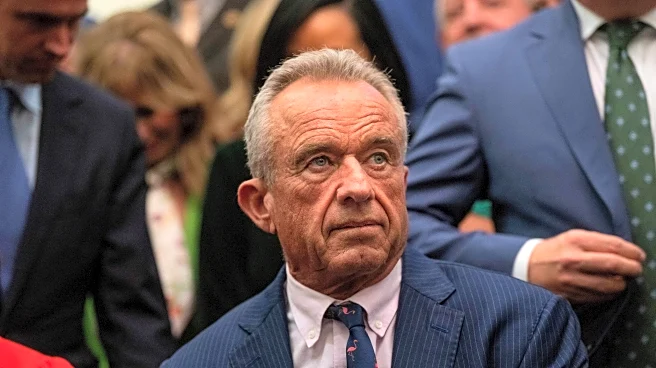What's Happening?
The Italian footwear industry is experiencing a downturn, as reported by the Confindustria Moda Research Centre for Assocalzaturifici. The sector saw declines in sales and industrial production in the first half of 2025, with sales down 5.6% and production down 9.5%. Exports to the U.S. showed resilience in April and May, but the uncertainty surrounding U.S. tariffs remains a concern. A U.S. federal appeals court recently declared the tariffs, set at a 15% baseline by the EU agreement, unlawful. The Supreme Court is expected to rule on the matter in October, following an appeal from the White House.
Why It's Important?
The imposition of tariffs by the U.S. has significant implications for the Italian footwear industry, which relies heavily on exports to the U.S., its second-largest market. The tariffs could affect American consumer purchasing decisions and impact exporters' margins if companies choose to absorb the new duties. The uncertainty surrounding these tariffs has led to cautious expectations for the remainder of 2025, with more than half of surveyed entrepreneurs anticipating lower results compared to 2024. This situation highlights the broader impact of international trade policies on global industries.
What's Next?
The Supreme Court's upcoming decision in October will be crucial in determining the future of the tariffs and their impact on the Italian footwear industry. If the tariffs are upheld, companies may need to adjust their pricing strategies or explore alternative markets. The industry will continue to monitor the situation closely, as the real consequences on sales can only be quantified once autumn data is available. Stakeholders are likely to engage in discussions to mitigate potential negative impacts and explore strategies to maintain market stability.
Beyond the Headlines
The ongoing trade tensions underscore the complex relationship between international trade policies and economic performance. The Italian footwear industry's experience reflects broader challenges faced by global industries in navigating geopolitical uncertainties. The situation also raises questions about the effectiveness of tariffs as a tool for economic leverage and their long-term impact on international trade relations.













